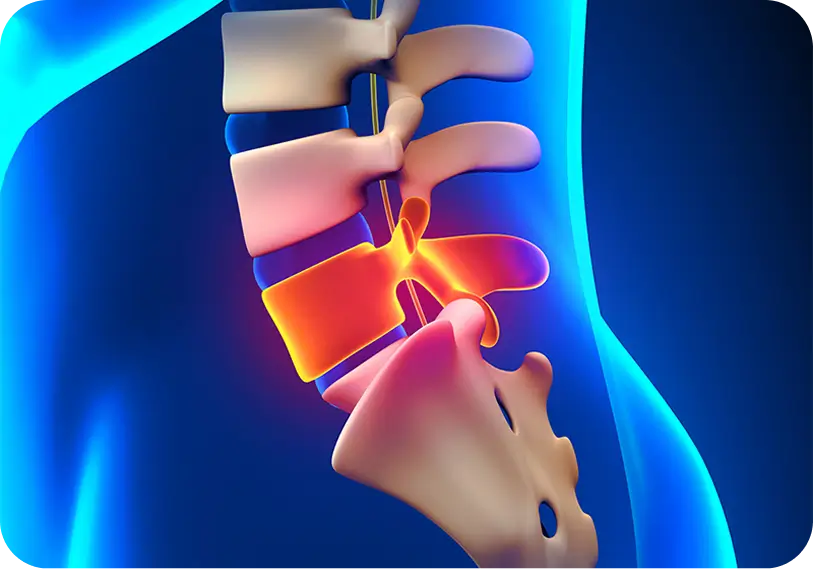When the spine is unstable or deformed, fusion stops painful motion so nerves can heal. We examine, confirm the diagnosis, and explain when fusion outperforms decompression alone. You’ll see the plan, risks, expected recovery, and return-to-work timelines before committing.
Note: When compression exists without instability, decompression alone may be enough — See Lumbar Laminectomy.
Neck: Cervical Fusion (ACDF)
A small neck incision removes the damaged disc, adds a graft or implant, and stabilizes the spine while easing nerve pressure.
Low Back: Lumbar Fusion — PLIF / TLIF / XLIF
PLIF: Accessed from the back; reliable stabilization for severe stenosis or instability.
TLIF: Similar to PLIF but from an angled approach; less nerve retraction and quicker recovery.
XLIF: Side approach; minimally invasive with smaller incision, less blood loss, and faster initial recovery.
We select the least invasive option that achieves strong fixation, proper alignment, and the best long-term function for your spine.


Motion-preserving option: Artificial Disc Replacement
Decompression-only option: Lumbar Laminectomy
We match the procedure to the diagnosis, not hype. Existing imaging is reused; new studies are ordered only if they impact care.
Optimize nutrition and bone health for better recovery
(See Physical Therapy & Rehab and DEXA Review).
Request Your Same-Day Spinal Fusion Evaluation
Don’t wait in pain — our expert spine specialists are available for same-day evaluations.
Spinal fusion is recommended when the spine becomes unstable, deformed, or slips repeatedly, causing nerve irritation and persistent pain. It’s often used for spondylolisthesis or post-surgical instability. When the issue is compression without instability, a focused Lumbar Laminectomy / Decompression may be all that’s needed instead of fusion. Each case is confirmed with thorough imaging and functional testing.
Fusion surgery stabilizes the spine by joining vertebrae, preventing painful movement, while decompression removes tissue pressing on nerves. When instability accompanies compression, both may be combined. Specialists often use a Diagnostic Nerve Block to confirm the pain source first, ensuring the chosen approach—fusion or decompression—delivers precise, lasting relief without unnecessary procedures or risks.
The neck is stabilized through Cervical Fusion (ACDF), while the lower back is treated with Lumbar Fusion. Surgeons may use PLIF, TLIF, or XLIF techniques, each designed to restore alignment and stability. Your care team selects the least invasive method for your anatomy, ensuring solid fixation, balanced posture, and a safe recovery supported by guided rehabilitation.
Yes. Some patients qualify for motion-preserving Artificial Disc Replacement if instability is minimal. Others improve through targeted decompression like Lumbar Laminectomy / Decompression or continued Non-Surgical Spine Treatments. At Comprehensive Spine Center, recommendations are diagnosis-driven—not routine—so each plan prioritizes function, comfort, and long-term results without unnecessary surgery.
Most patients return to desk work within 1–2 weeks after cervical fusion or 2–4 weeks after lumbar fusion. Healing continues for months as bone grafts solidify. Recovery includes Physical Therapy & Rehab to restore strength and mobility. Bone quality may be assessed through Electromyography (EMG) or bone density review to optimize healing and prevent complications.
When only one cervical level is diseased and facet joints remain healthy, Artificial Disc Replacement preserves neck motion. If multiple levels are unstable or arthritic, Cervical Fusion (ACDF) provides greater long-term stability. Your surgeon reviews imaging, anatomy, and activity goals to ensure the chosen procedure aligns with your lifestyle and recovery expectations.
Contact us and set up your doctor visit today to start your journey to pain-free living